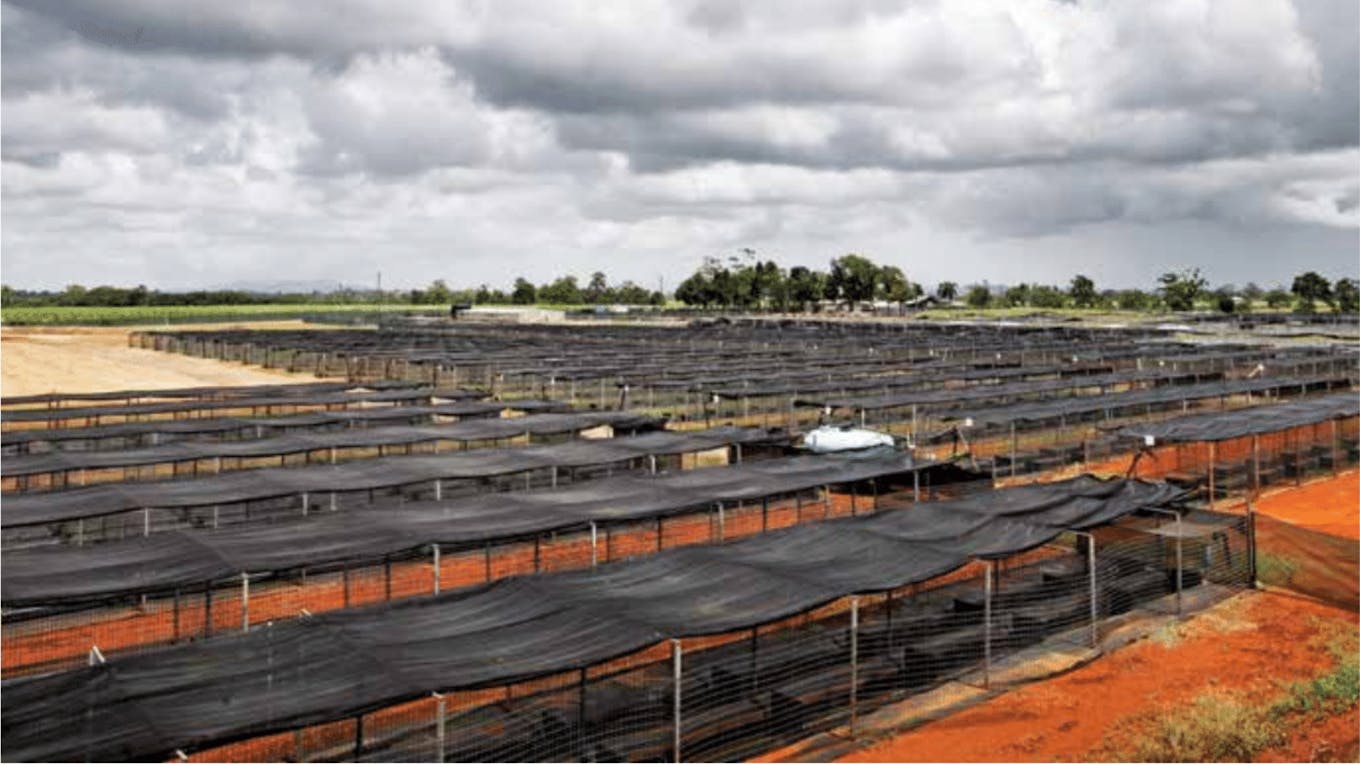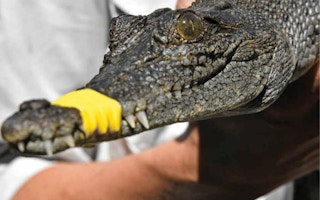A plan by French luxury goods company Hermès to expand crocodile farming operations in Australia has alarmed animal welfare campaigners, who say the plan could boost the number of farmed crocodiles in the country by more than a third.
To continue reading, subscribe to Eco‑Business.
There's something for everyone. We offer a range of subscription plans.
- Access our stories and receive our Insights Weekly newsletter with the free EB Member plan.
- Unlock unlimited access to our content and archive with EB Circle.
- Publish your content with EB Premium.
A report titled Fashion Victims by non-government organisation World Animal Protection, published on Tuesday, revealed how a company controlled by Hermès is planning to convert a former melon and banana farm into a facility for rearing and harvesting 50,000 saltwater crocodiles.
The hides of saltwater crocodiles are used to make one of the most coveted types of exotic leather, because of its texture and attractive patterns, but it is increasingly unfashionable because of animal welfare concerns surrounding the crocodile skin trade, and recognition that crocodiles are complex, sentient beings.
In its report, World Animal Protection called on the Australian Government to reject an export permit for the Hermès crocodile farm, and to work on a time-bound phase-out of the industry. The NGO urges fashion brands to refrain from the use of captive wild animals, highlighting the zoonotic disease outbreak risk of farming wildlife as well as animal welfare concerns.
The report noted the welfare risks posed by crocodile farming, including stress and injuries from close confinement, and the trauma of restraint and barbaric slaughter methods. To harvest the crocodile, it is immobilised with an electrical stunning wand, the nape is then cut, and the brain is pithed with a steel rod. Before slaughter, crocodiles are kept isolated in plastic-lined concrete enclosures for months without enrichment.
At the very least, animal welfare standards for farmed crocodiles in Australia should be updated, the NGO urged, as they are currently based on decades-old science and research. Crocodiles communicate with one another visually, chemically and acoustically, and the report cited studies that show reptiles can experience stress, anxiety, distress, excitement, pleasure, fear, frustration, pain, and suffering. Some documentaries have even shown crocodiles displaying love, affection and loyalty towards people. However, reptile sentience is generally not reflected in legislation for reptiles in captivity, the study noted.
In response to growing concerns about animal welfare and acceptance of animal sentience, the use of exotic skins is becoming increasingly controversial.
Ben Pearson, head of campaigns, World Animal Protection Australia
Hermès is among a shrinking number of luxury brands that continue to source exotic animals to make belts and bags, but launched a mushroom leather bag earlier this year as an alternative to animal leather.
French luxury house, Chanel banned the use of exotic skins in 2018, declaring that using them no longer matched its ethical standards. American department store chain, Nordstrom plans to have eliminated exotic skins from its supply chain by the end of 2021, stating that it has “listened to feedback from customers”. French label Yves Saint Laurent is doing the same, joining other high-end brands including British department store Selfridges, Victoria Beckham, Mulberry, Karl Lagerfeld, Stella McCartney, Vivienne Westwood and Tommy Hilfiger in banning the use of exotic skins.
However, demand persists for crocodile skin leather. The biggest global crocodile skin import markets are France, Singapore, and Japan in a global industry believed to be worth around US$1 billion.

Jamie Chua modelling a Hermès crocodile-skin handbag. Image: ec24m
The report highlights how Asian celebrities are fuelling the demand for cruelty-tainted luxury goods. Singaporean socialite Jamie Chua is believed to have the world’s largest Hermès Birkin handbag collection, the most expensive being the Crocodile Diamond Birkin, which retails for about US$300,000. Locally made and sold bags in Australia retail for around US$1,500.
Australia provides 60 per cent of the global trade in saltwater crocodile skins, and two thirds are produced in the Northern Territory. Australia has about 200,000 farmed crocodiles, a number that likely exceeds wild numbers. But a lack of transparency in the crocodile skin industry makes it difficult to link fashion brands to the crocodile farms.
Hermès and French fashion house Louis Vuitton are believed to own or control most crocodile farms in the Northern Territory, but this information is not readily available. According to a report by Australian media outlet ABC, owners of farms bought out by the luxury goods brands sign non-disclosure agreements barring them from revealing their ties.
World Animal Protection questions why the luxury goods firms would go to such lengths to keep sourcing information hidden, given that Hermès claims that it goes “beyond the humane treatment of animals” in its animal welfare policy, and Louis Vuitton says that it “respects animal wefare” and is committed to 100 per cent responsibly raw source materials.
The report notes that the Northern Territory crocodile farming industry uses previous conservation success to legitimise the industry, and claims that the use of exotic skins aids crocodile conservation. The saltwater crocodile was previously hunted to the brink of extinction, but wild crocodile numbers have recovered and adequate legislative protections exist to ensure they will remain healthy, the report said.
Discrepancies in trade data adds to the murkiness of crocodile farming. In 2017, the last year of recorded CITES trade data, Australia reported exporting 10,294 crocodile skins to Singapore, but Singapore reported importing 16,767 crocodile skins from Australia. Australia has not reported export data since 2017, but import data from other markets suggests that more than 70,000 skins were traded from 2018 to 2019.
The report’s authors called on the Australian government to begin work on a time bound phase-out of the crocodile farming industry that includes measures to ensure alternative livelihood options for people employed in the industry, particularly indigenous workers.

Individual pens for holding crocodiles before they’re slaughtered. Image: Fashion victims
The report emerges the week after an animal welfare charity Beyond Cruelty said that the United Nations should add animal exploitation to the Sustainable Development Goals (SDG), creating an 18th SDG. “Whether it’s eradicating world poverty and hunger, achieving gender equality, implementing quality education for all, protecting the environment, and the many other issues the 17 SDGs aim to address, none of it is possible without reducing or ideally removing animal exploitation,” said Claire Smith, president of Beyond Cruelty.










